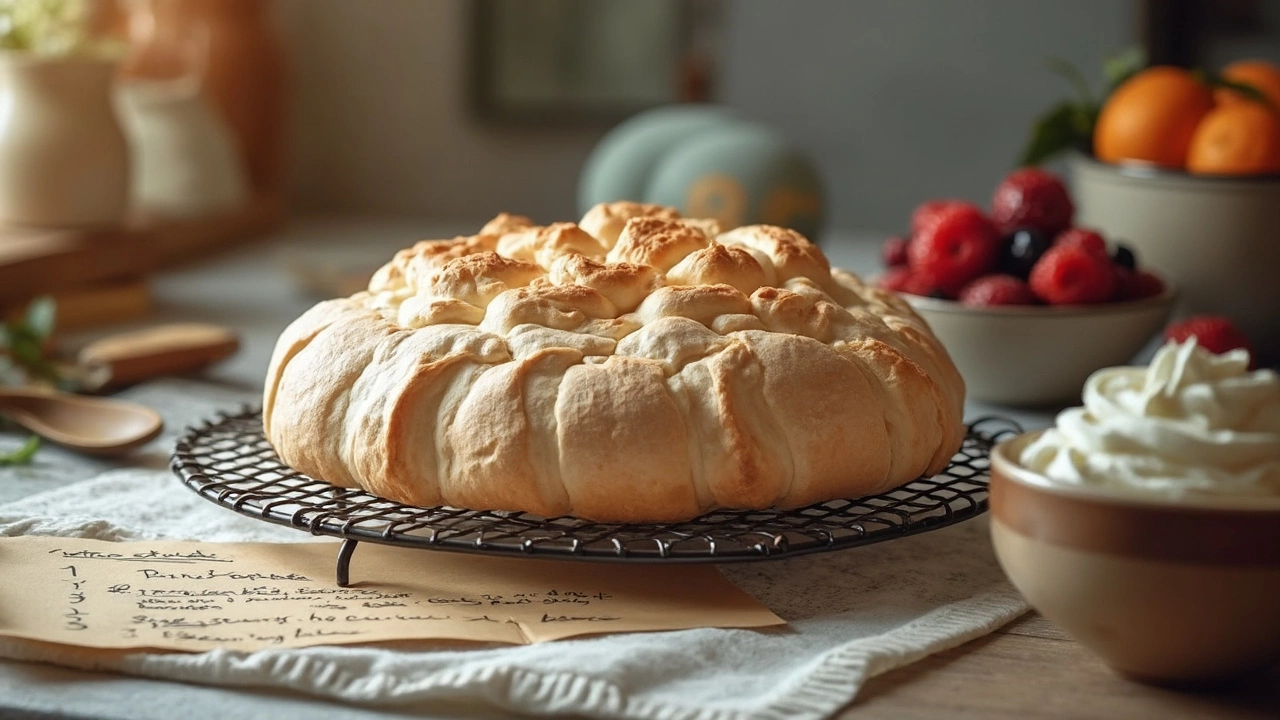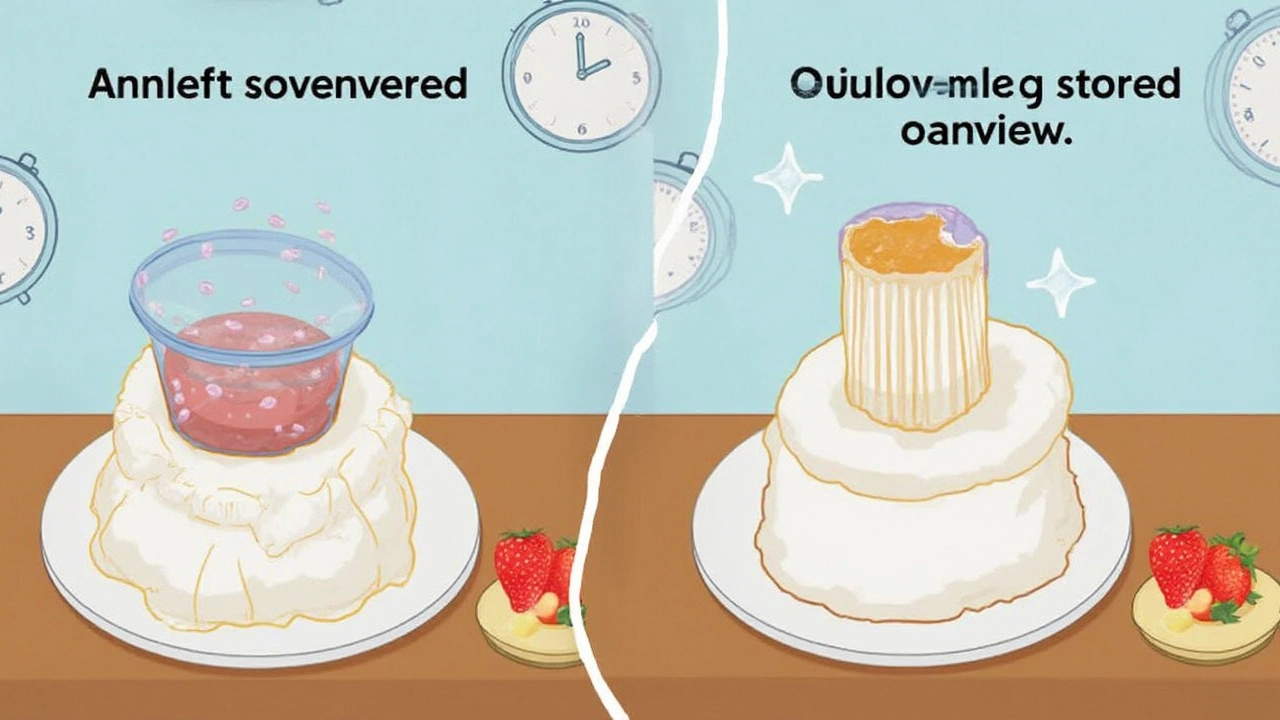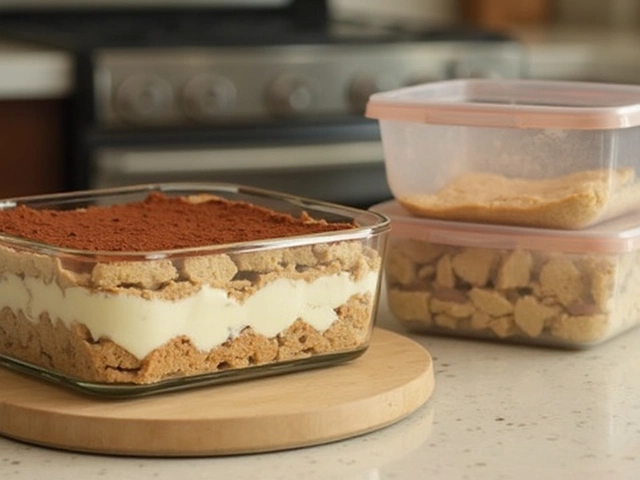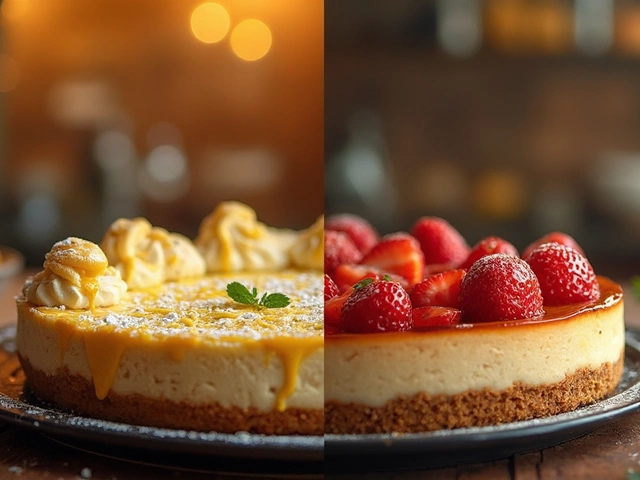
Ever made pavlova ahead and found it disappointing the next day? You're not alone. Planning dessert in advance is smart, but pavlova can be risky if you don't know what you're doing. The big question: does making pavlova the day before actually work, or does it end in a chewy, sticky mess?
Here's what most home bakers get wrong—it's not just about baking, but also about storing. Meringue is picky. Leave it out in the wrong spot or cover it the wrong way, and you'll kill that signature crisp shell before you even get to add the cream. But if you do it right, you can pull off a make-ahead pavlova that guests will actually believe is fresh.
Worried about the filling? Hold that thought. The real trick is timing when to add your toppings. Do it wrong, and the whole dessert melts into a puddle. Do it right, and you’ll have that dreamy mix of crunchy and marshmallowy, just the way it should be. Grab these time-saving hacks and you’ll never have to stress about last-minute pavlova again.
- Can You Actually Make Pavlova in Advance?
- How to Store a Pavlova Overnight (Without Ruining It)
- When to Add the Cream and Toppings
- Troubleshooting: Soggy Pavlova and Easy Fixes
Can You Actually Make Pavlova in Advance?
So, can you whip up a pavlova before the big day and still have it come out crisp and perfect? Short answer: yes, but only if you stick to a couple of key rules. The meringue base itself is your main focus. Freshly baked pavlova has that classic crunchy shell and soft, marshmallowy center. If you want to keep the magic, you need to keep the base dry and free from moisture—this is what sets you up for success or a soggy flop.
It's not just kitchen lore. Food scientists say that meringue absorbs moisture from the air, which is why pavlova can go soft and sticky in a humid kitchen or if you store it wrong. In fact, research shows that crispy pavlovas can lose up to 30% of their crunch if left out in a damp room for just a few hours. If you live somewhere humid, this matters even more!
| Make-Ahead Pavlova Facts | What Happens |
|---|---|
| Baked 1 day ahead, kept dry | Stays crisp if stored right |
| Assembled with cream 1 day ahead | Turns soggy and weeps |
| Left out uncovered overnight | Shell softens, loses crunch |
Here's the deal: you can make pavlova in advance, but only the meringue part. Make it, let it cool, and stick to smart storage. Leave the cream and fruit for the last minute. Some pro bakers even prefer to make meringue one or two days ahead, because it frees up oven space and lets you focus on toppings right before serving.
- Always cool your pavlova completely before storing.
- Never add toppings until it’s time to serve, otherwise the shell gets soggy fast.
- If you’re worried about timing, bake the base in the evening, store it properly, and finish it just before serving.
So, yes—making pavlova in advance works—just don’t rush into putting everything together too soon. Aim for flexibility and focus on good storage and smart assembly to keep your dessert showstopper-ready.
How to Store a Pavlova Overnight (Without Ruining It)
Pavlova isn’t your run-of-the-mill cake. As tempting as it is to just cover it and pop it in the fridge, resist the urge. Cold and humidity will zap out the crunch and leave you with a sticky meringue mound. To keep your pavlova as crisp as possible for tomorrow, it’s all about keeping moisture away.
The top rule: never refrigerate a bare pavlova shell. The fridge makes the sugar in the meringue pull water from the air, and you’ll go from crisp to rubbery fast. Instead, store it at room temperature, somewhere dry and cool. Kitchens can get humid, so check if you have a cupboard or an unused oven. (Just don’t forget it and accidentally preheat!)
- First, let the pavlova shell cool completely after baking. Even a touch of warmth left inside will trap steam and make it soft later.
- Next, take a large airtight container or gently cover the pavlova with plastic wrap or foil. If you use wrap or foil, make sure it doesn’t touch the meringue—use a few skewers or chopsticks to create a little tent. Direct contact will peel off your top layer when you remove the wrap.
- If your kitchen is humid, toss a couple of dry rice grains in a small bowl and place it in the container beside your pavlova. The rice will soak up extra moisture and buy you some time.
A properly stored pavlova shell lasts one to two days with its crunchy texture. If you know you’ll need more time, bake it a little longer than usual, then let it cool slowly in the turned-off oven with the door just cracked—this dries it out more and gives you a better shot at a crispy crust overnight.
One thing to never do: store pavlova with its whipped cream or fruit toppings already added. The cream and fruit will leak moisture into the shell and ruin it by morning. Always keep toppings and pavlova separate until just before serving.

When to Add the Cream and Toppings
Here’s the thing about pavlova: the second you add whipped cream or fruit, a timer starts ticking. Meringue's crisp edge just can't survive wet toppings for long—especially overnight. Moisture in cream and juicy fruit seeps into the shell, turning it soggy much faster than people expect.
If you want to nail the ideal texture, add your cream and toppings right before serving. You can bake and cool the meringue a day in advance, but keep it in an airtight container at room temperature. Don't even think about refrigerating it with toppings on—refrigerators are humid, which makes meringue absorb even more moisture.
Here's a handy plan for getting that perfect pavlova the day before without losing crunch:
- Pavlova base: Bake, cool, and store at room temp in an airtight container. Don’t chill it, and keep it away from steamy kitchens.
- Whipped cream: Whip it ahead, but stash it in a sealed container in the fridge. If it starts to separate, just give it a quick whisk before spreading.
- Fruit: Prep your slices, drain off any extra juice, and keep in the fridge until showtime.
- Topping time: Pile on the cream and fruit right before guests arrive or right before you want to serve.
To show how fast things can change, check out this quick comparison of pavlova texture over time based on when the toppings go on:
| Assembly Time | Texture After 1 Hour | Texture After 4 Hours | Texture Next Day |
|---|---|---|---|
| Right Before Serving | Crisp Shell | Mostly Crisp | Crisp If Untopped |
| 4 Hours Ahead | Softening | Very Soft, Less Crunch | Soggy |
| Overnight | Soggy by Morning | Very Sticky | Collapsed |
If you really need to get a head-start, assemble the pavlova at most an hour or two before serving. Otherwise, you lose that magic contrast between the crunchy outside and marshmallowy inside—and that’s what makes pavlova a showstopper.
Troubleshooting: Soggy Pavlova and Easy Fixes
If your pavlova ended up chewy or soggy instead of crunchy, there’s usually a reason (and a fix). The good news: you’re not alone. Meringue acts up for all sorts of reasons—humidity, fridge mistakes, or even the way you pack it up.
Here are the top things that sabotage that crispy shell and what you can actually do about it:
- Moisture in the Air: Pavlova hates humidity. Even a rainy day can mess with it. Always cool your meringue inside the oven with the door cracked open. This slowly lowers the temperature and keeps it dry.
- Incorrect Storage: Never store pavlova in an airtight container or fridge before adding toppings. The shell will sweat and soften. Instead, keep it in a dry, draft-free spot (like the oven after it cools), lightly covered with baking paper or a tea towel.
- Toppings Added Too Soon: Cream and fruit add moisture fast. Only pile them on just before serving. If you make ahead, keep the shell and toppings separate until the last minute.
- Undercooked Meringue: If your pavlova looks pale and feels sticky after cooling, it probably needed longer in the oven. Err on the side of a slower bake at a lower temp.
Here’s what can go wrong and how to save it, with some quick numbers to help out:
| Problem | Why It Happens | Simple Fix |
|---|---|---|
| Soggy bottom | Left in fridge or stored airtight | Recrisp in a 120°C (250°F) oven for 15 minutes |
| Sticky top | High humidity | Cool in oven, store with paper |
| Dense instead of marshmallowy middle | Overbeaten egg whites or rushed bake | Next time, stop beating at glossy soft peaks, bake slower |
| Entire pavlova collapsing | Added toppings too early | Only add cream and fruit just before eating |
One last tip: if you live somewhere humid and still want that crunchy pavlova, consider using a dehumidifier in the kitchen or baking on a dry day. And if your pavlova softened overnight, 10-15 minutes in a low oven (120°C/250°F) can sometimes rescue it—just watch closely so it doesn’t brown.





